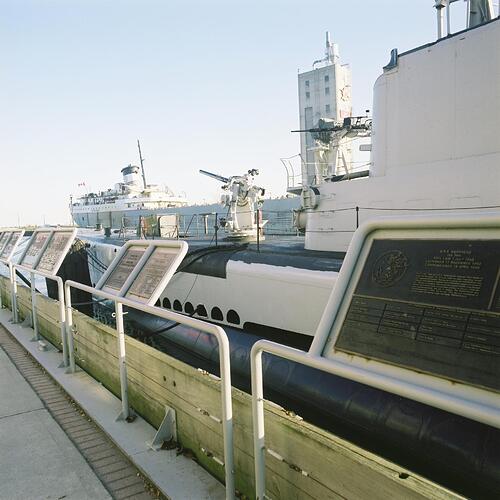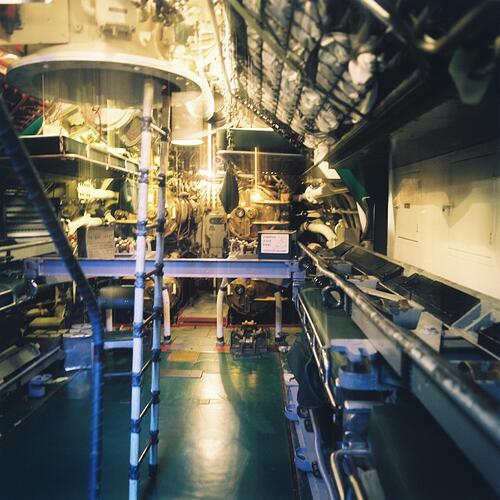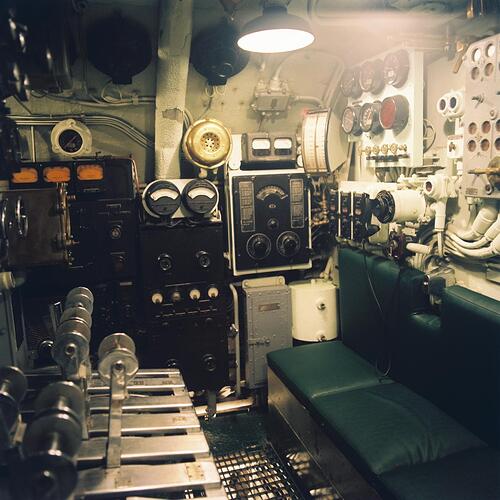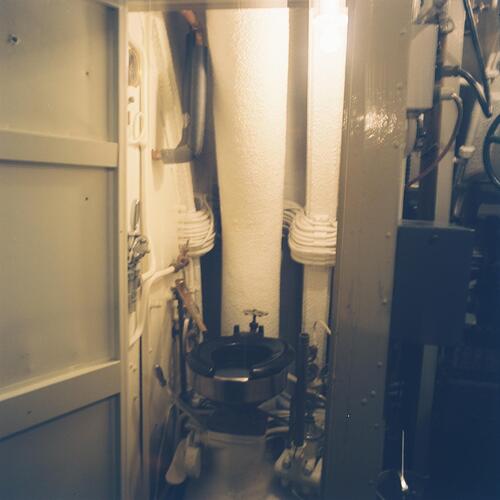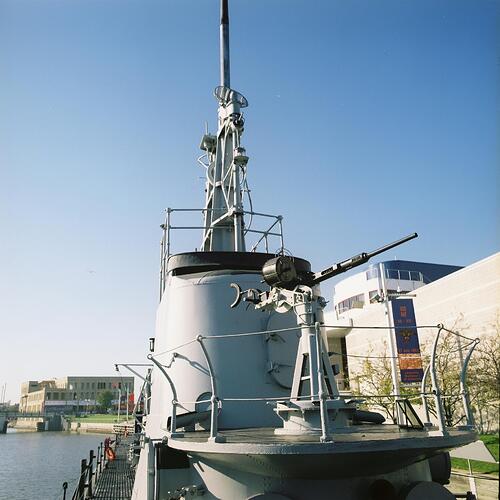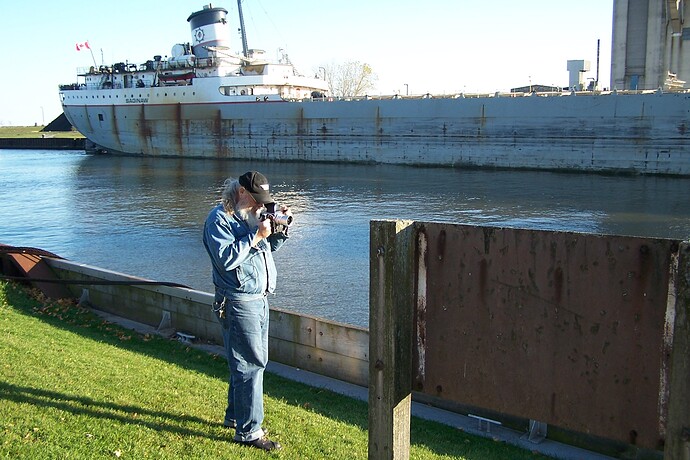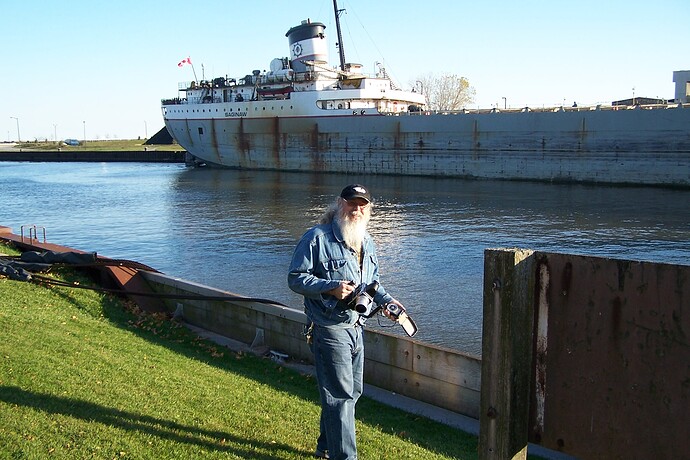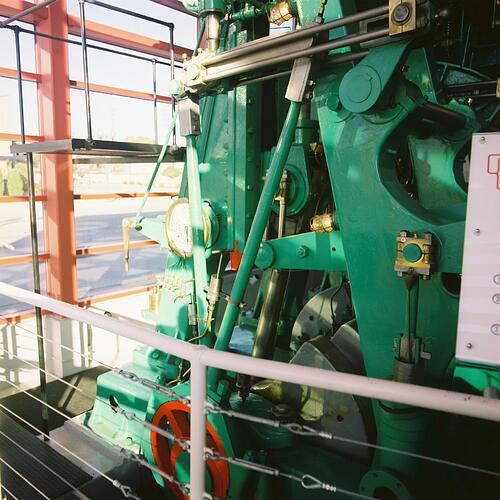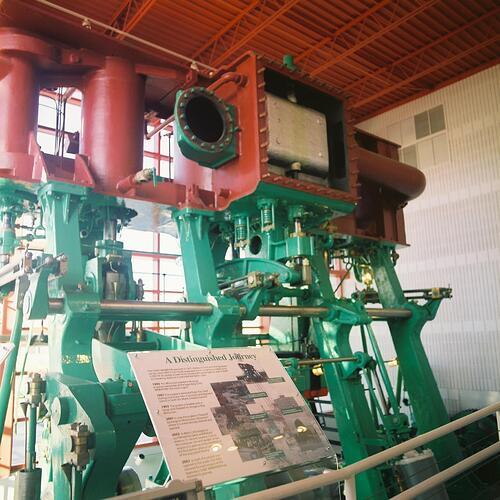Beautiful pics. The interior shots are incredibly sharp considering the lighting restrictions and slower shutter speed.
It reminds me of my visit as a teenager to the submarine USS Cavalla (SS-244) at Seawolf Park on Pelican Island, just north of Galveston, Texas in the 1970’s. We used to visit the Battleship Texas (BB-35) also while I was growing up in Houston, Texas in the 1960’s and 70’s.
USS Cobia (SS/AGSS-245), a Gato-class submarine, was a ship of the United States Navy named for the cobia, a food fish found in warm waters.
Cobia (SS-245) was launched 28 November 1943 by Electric Boat Co., Groton, Conn., sponsored by Mrs. C. W. Magruder; and commissioned 29 March 1944, Lieutenant Commander Albert L. Becker in command.
Cobia reached Pearl Harbor from New London 3 June 1944. On 26 June she put to sea on her first war patrol, bound for the Bonin Islands. On 13, 17, and 18 July she sank Japanese freighters. The last, Nisshu Maru, was a troop transport carrying a Japanese tank regiment to Iwo Jima. Even though only two members of the 26th Tank Regiment died, all of the regiment’s 28 tanks went to the bottom of the sea. It would be December before 22 replacements were provided.
On 20 July she sank three small armed ships in a running gun battle. One of them rammed Cobia, causing minor damage, but she continued her mission, sinking a converted yacht of 500 tons on 5 August, one of whose survivors she rescued as her first prisoner of war.
After refitting at Majuro from 14 August to 6 September 1944, Cobia sailed into the Luzon Straits for her second war patrol, a mission punctuated again and again by attacks by Japanese aircraft. On 22 October, she rescued two survivors of a Japanese ship previously sunk by one of Cobia’s sisters. She put into Fremantle to refit 5 November, and cleared on her third war patrol 30 November. Sailing into the South China Sea, she reconnoitered off Balabac Strait between 12 December and 8 January 1945, and on 14 January sank the minelayer Yurishima off the southeast coast of Malaya. Surfacing to photograph her sinking victim, Cobia was driven under by a Japanese bomber. Next day she rescued two Japanese from a raft on which they had been adrift 40 days.
Once more she refitted at Fremantle between 24 January and 18 February 1945, then sailed to the Java Sea for her fourth war patrol. On 26 February she engaged two sea trucks, one of which resisted with machinegun fire which damaged her radar equipment and killed Ralph Clark Huston Jr., a 20 mm gun loader and Cobia’s only casualty of the war. After sinking both sea trucks, Cobia interrupted her patrol for repairs at Fremantle from 4 to 8 March, then returned to the Java Sea, where on 8 April she rescued seven surviving crewmembers of a downed Army bomber. One of the crewmembers, Jean Vandruff, recounted the story of the rescue on HBO’s Band of Brothers collection of WWII stories…
Cobia replenished at Subic Bay from 15 April to 9 May 1945, then put out for the Gulf of Siam and her fifth war patrol. On 14 May she attacked a cargo ship, but was driven deep by depth charges hurled by a minesweeper. Luck changed on 8 June, when Cobia contacted a tanker convoy, and sank both a tanker and the landing craft Hakusa. She refitted once more at Fremantle between 18 June and 18 July, then sailed for her sixth and final war patrol. After landing intelligence teams along the coast of Java on 27 July, Cobia sailed to act as lifeguard during air strikes on Formosa until the end of hostilities, returning to Saipan 22 August.
Of Cobia’s six war patrols, the first, third, fourth, and fifth were designated as “successful” war patrols, for which she received four battle stars. She was credited with having sunk a total of 16,835 tons of shipping.
She sailed on for Pearl Harbor, New York, Washington, and New London, where she was decommissioned and placed in reserve 22 May 1946. Recommissioned 6 July 1951, Cobia trained reservists and Submarine School students at New London until placed in commission in reserve at the Portsmouth Naval Shipyard 29 October 1953. After overhaul, she was towed to New London, where she was again placed out of commission in reserve in the Atlantic Reserve Fleet 19 March 1954.
By 1959, the Navy considered Cobia obsolete as a deployable warship and transferred her to the Milwaukee, Wisconsin Naval Reserve Center. There it served as a training platform for the next eleven years. She was redesignated an Auxiliary Submarine, AGSS-245, 1 December 1962.
On 1 July 1970, the Navy struck Cobia from the Naval Register, and she was towed to Manitowoc, Wisconsin to serve as an international memorial to submariners. In 1986, Cobia was incorporated as a part of the Wisconsin Maritime Museum, declared a National Historic Landmark, and placed on the National Register of Historic Places. Cobia is permanently docked at the Manitowoc River’s mouth into Lake Michigan where tours are given daily. The Cobia also houses the oldest operating radar set in the world.


